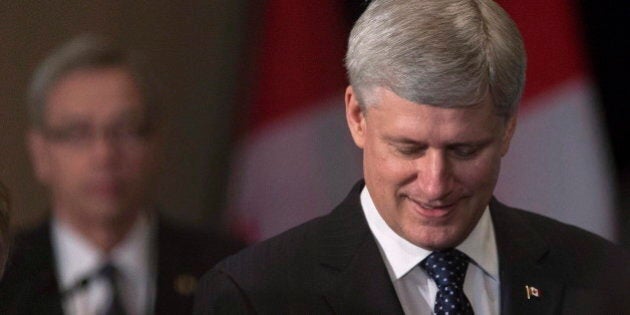
In the 2015 federal budget, the Canadian government announced its intention to create a $300-million initiative to encourage private investment, job creation and growth that will fight extreme poverty in developing countries. Buried halfway through the over 500-page budget door stopper, the decision to create a "development finance initiative" is at the same time one of the most overdue and most innovative elements of the government's economic action plan.
Most overdue because Canada is the last G7 country and nearly the final relatively rich, industrialized economy to create a public arm to support private investment in development. Some of our counterparts have been in this business for over 50 years, doing good and making money at the same time. For instance, America's Overseas Private Investment Corporation (OPIC) returns eight dollars to the U.S. Treasury for every dollar fronted for overhead. Every similar G7 development institution is profitable.
This initiative looks even tardier when one considers that successive Canadian governments since the early Trudeau era have bandied about the idea of creating a public entity to catalyze more private capital for development. This is the first time Ottawa has translated talk on this concept into action. International Development Minister Christian Paradis and his team deserve plaudits for returning to the idea, consulting widely, enlisting international help from the World Economic Forum (WEF), amongst others, and winning support in this budget for a fresh approach to Canada's efforts to make extreme poverty history.
While late in arriving, this initiative is still timely because 2015 is a pivotal year for international development. In July, the world will meet in Ethiopia to marshal financing to support the United Nations' new set of sustainable development goals (SDGs), which aim to organize global efforts to eradicate extreme poverty by 2030. There is no circumstance under which public aid will be sufficient to reach these targets.
The Sustainable Development Solutions Network (SDSN) projects that the world will need between US$500 billion and US$3 trillion in additional annual spending to achieve the SDGs. At present, total global annual official development assistance (ODA) sits at about US$150 billion. If all unmet aid promises were realized, about US$200 billion could be added to this figure. This would include raising Canada's aid budget from a low (and shrinking) of 0.24 per cent of GNP to Lester B. Pearson's UN-endorsed target of 0.7 per cent. Additional efforts to fight tax evasion by multinational corporations and mobilize tax revenue in poor countries could add an extra US$225 billion to the SDG pot. But all told, this US$425 billion in additional annual resources still wouldn't get us to the SDSN's lowest estimate of what the world will need every year to reach the SDGs.
The SDGs will be realized only if increased public aid is partnered with massive additional private investment. At some US$2 trillion annually, private flows to developing countries already dwarf ODA. Furthermore, the World Bank finds that some 90 per cent of jobs in developing countries are created by private capital.
But make no mistake: aid is still a necessary part of our push to reach the SDGs and this new development finance initiative in no way excuses the federal government's backsliding on meeting Canada's ODA commitments. Left to the private sector, a host of public goods -- health, education, sanitation and social services -- would be underprovided or not provided at all in poor countries. Aid needs to be increased and focused in these areas and private capital mobilized to do the rest.
Canada has already made ambitious commitments to support the collective SDG project, with a particular emphasis on improving child, newborn and maternal health. With our aid budget stuck at less than US$5 billion annually, the 2015 budget's development finance initiative would allow Canada to leverage private know-how and money to get closer to making good on our promises. It's not enough, but it's a useful addition.
This initiative also has the potential to be among the government's most innovative programs: as the final G7 country to offer meaningful support to private development efforts, we can learn from others' experiences and do things both differently and better. We can also learn from our own mistakes.
A previous Canadian attempt to support private development efforts that was dubbed CIDA Inc. had limited impact and was wound down because it didn't have the expertise, experience or financial tools it needed to be an effective partner with private capital. In contrast, the new initiative is set to be created in Export Development Canada (EDC), which has the staff and nous to work with private enterprise and realize this project's promise. Granted, EDC's mandate will need to be altered to accommodate this undertaking and give it the full range of financing tools this initiative needs -- debt, equity, insurance and guarantees -- but this is potentially easier and faster than creating a new body from scratch.
The government is admittedly taking a very cautious approach to launching this initiative: $300 million over five years is small against the needs and opportunities in this space. In our 2014 submission to Parliament's Standing Committee on Finance, James Haga and I pegged $350 million annually as the minimum amount Canada should devote to a new development finance initiative in order to make our efforts proportionate to those of our G7 peers. We also advocated for a stand-alone crown corporation devoted to this project -- a focused institution rather than a more limited initiative under an existing entity, such as the EDC, whose mission is not centered on development. But these are quibbles. If this pilot initiative lives up to its potential over the next five years, it will provide the foundation on which a proper Canadian development finance institution (DFI) could be built.
The government's development finance initiative should be an election issue -- an issue every major party should support. Last year, I joined an effort with the development organization Engineers Without Borders to discuss proposals for a Canadian DFI with some sixty MPs drawn from across party lines. Every single one thought a Canadian DFI was a good idea.
It's easy to see why: there's something for everyone to love in a Canadian DFI. For proponents of markets and small government, a Canadian DFI is a parsimonious use of public funds: with relatively little money, it could do a lot of good. For supporters of Canada's companies and entrepreneurs, a Canadian DFI would open up new markets for Canadian businesses while enabling them to generate jobs and growth that reduce poverty. For internationalists, a Canadian DFI would help plant maple leaves in countries where our presence is small and our current impact is limited. And for development organizations, a Canadian DFI would provide a welcome chance to focus our less than US$5 billion in annual government grant aid on the provision of public goods -- vaccines, anti-malarial bed nets and early childhood education -- in the poorest countries that have no access to international capital markets and that receive little foreign direct investment.
Over the next few weeks, Canada's business, investment and aid communities should come together to ensure today's expression of intent gets translated into clear provisions in the forthcoming budget implementation act that will bring this development finance initiative into being. And in the coming months, we should all join with Minister Paradis to ensure this initiative builds on the insights of other countries so that Canada, as the last G7 private development financier, is also the most successful.
The 2015 federal budget has opened the door to the creation of a Canadian DFI wider than it has ever been. Together, we should seize this opportunity and finally make it happen.
ALSO ON HUFFPOST:
